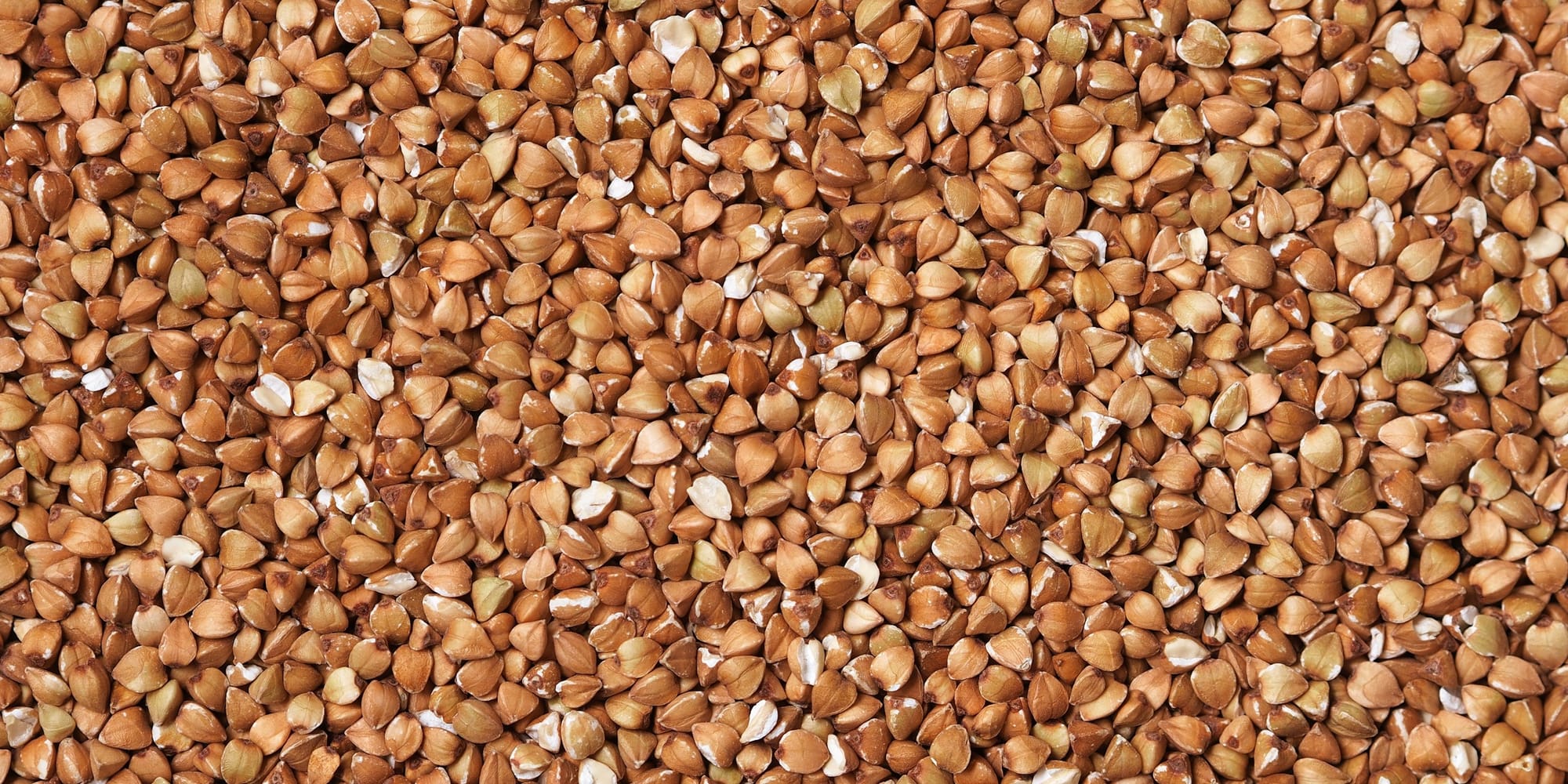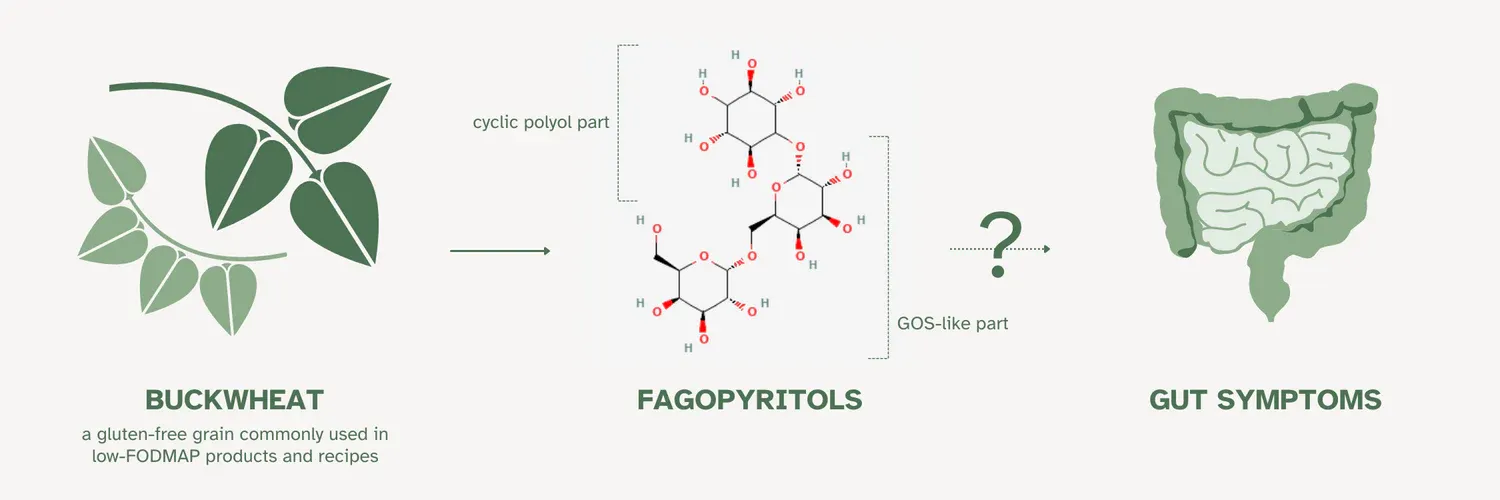Fagopyritols and the sensitive gut
Short-chain carbohydrates found in our diet which are not digested in the small intestine and are rapidly fermented by colonic bacteria are commonly referred to as FODMAPs.

Short-chain carbohydrates found in our diet which are not digested in the small intestine and are rapidly fermented by colonic bacteria are commonly referred to as FODMAPs (fermentable oligo-,di-, monosaccharides and polyols). Although numerous benefits have been associated with FODMAP consumption, the ingestion of these carbohydrates by individuals suffering from functional gastrointestinal disorders such as Irritable Bowel Syndrome (IBS) is often associated with gastrointestinal discomfort and symptoms, including altered bowel habits, bloating and excessive abdominal pain and cramping. The effect of FODMAPs on IBS symptoms appears to be in part driven by luminal distention due to fermentation products such as hydrogen and methane generated by the action of gut microbiota on the ingested FODMAPs and the inherently osmotically active nature of the FODMAPs.

The Low FODMAP Diet as a Solution for Functional Gastrointestinal Disorders
The dietary restriction of these short fermentable carbohydrates (low FODMAP diet) is thus considered an important intervention in the dietary management of IBS. The low FODMAP diet involves the restriction of multiple fermentable oligosaccharides (fructans, galacto-oligosaccharides/GOS), disaccharides (lactose), monosaccharides (fructose when in excess of glucose) and polyols (eg, sorbitol, mannitol). This list of FODMAPs is often quoted and extensively investigated. They are also the FODMAPs that are exclusively tested when certifying food ingredients, products, and recipes as low FODMAP. However, as some recent studies show, a different group of soluble, non-digestible fermentable carbohydrates also demands attention in this regard.
Common FODMAPs and Their Dietary Restrictions
Whole grains and pulses are rich in a number of phytonutrients and bioactives and have several reported health-promoting effects. Not surprisingly, nearly every cuisine has its own variation of whole grains and pulses as they naturally complement each other to provide a wholesome culinary and nutritional experience.
Accumulation and Properties of Fagopyritols
However, two main classes of FODMAPs are found in these popular dietary components - fructans in gluten-containing whole grain cereals such as wheat, spelt, barley, and rye and α-galacto-oligosaccharides (GOS) in pulses such as peas, lentils, and chickpeas. Hence these ingredients are often avoided by individuals on a low FODMAP diet.
Malting and Germination as Methods to Reduce FODMAPs in Buckwheat
Gluten-free dietary ingredients (e.g., rice, millet, buckwheat) do not accumulate large amounts of any of the FODMAPs commonly investigated making them a popular choice as alternative whole grains for people following the low FODMAP diet. However, some recent studies by researchers at University College Cork, Ireland, have once again highlighted earlier findings that buckwheat can accumulate significant amounts of a particular class of soluble indigestible carbohydrates that may act as FODMAPs - fagopyritols.
Reevaluating Buckwheat's FODMAP Classification
Thus although buckwheat is currently listed as a low FODMAP grain, a major portion of its soluble carbohydrate content is contributed by fagopyritols which are non-digestible, fermentable carbohydrates similar to GOS and could potentially act as a trigger for IBS symptoms. Moreover, large amounts of fagopyritols in buckwheat could increase the chance of small servings leading to symptoms.
The Need for Further Research
More studies are required to explore the fermentation and osmotic profile of fagopyritols and their potential effects on the sensitive gut to determine if they warrant classification as a new class of molecules in the FODMAP group.
By incorporating these headings and subheadings, your article maintains its structure and becomes more reader-friendly and SEO-optimized for search engines.
References
[1] Rebello CJ, Greenway FL, Finley JW. Whole grains and pulses: a comparison of the nutritional and health benefits. J Agric Food Chem. 2014 Jul 23;62(29):7029-49.
[2] Steadman KJ, Burgoon MS, Schuster RL, Lewis BA, Edwardson SE, Obendorf RL. Fagopyritols, D-chiro-inositol, and other soluble carbohydrates in buckwheat seed milling fractions. J Agric Food Chem. 2000 Jul;48(7):2843-7.
[3] Cyclitol galactosides in embryos of buckwheat stem–leaf–seed explants fed D-chiro-inositol, myo-inositol or D-pinitol, Seed Science Research, December 2005, 15(04):329 -338.
[4] Horbowicz, M., Brenac, P. & Obendorf, R. Fagopyritol B1, O-α-D-galactopyranosyl-(1→2)-D-chiro -inositol, a galactosyl cyclitol in maturing buckwheat seeds associated with desiccation tolerance. Planta **205, 1–11 (1998).
[5] Ispiryan L et al, Characterization of the FODMAP-profile in cereal-product ingredients. Journal of Cereal Science, ****Vol 92, March 2020, 102916.
[6] Ispiryan L et al, Fundamental study on changes in the FODMAP profile of cereals, pseudo-cereals, and pulses during the malting process. Food Chemistry, Vol 343, May 2021, 128549.
